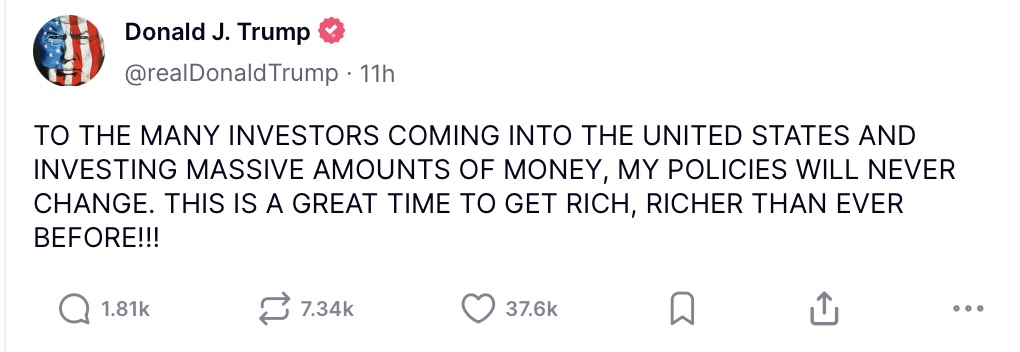NEW DELHI: Police banned public gatherings in parts of the Indian capital and other cities for a third day Friday and cut Internet services to try to stop growing protests against a new citizenship law that have so far left eight people dead and more than 1,200 others detained.
Thousands of protesters stood inside and on the steps of New Delhi’s Jama Masijd, one of India’s largest mosques, after Friday afternoon prayers, waving Indian flags and shouting slogans against the government and the citizenship law, which critics say threatens the secular nature of Indian democracy in favor of a Hindu state.
Police had banned a proposed march from the mosque to an area near India’s Parliament, and a large number of officers were waiting outside the mosque.
About 2,000 people protested outside New Delhi’s Jamia Millia Islamia University, which was the site of weekend clashes in which students accused to police of using excessive force that sent dozens to hospitals.
The protests have targeted the new citizenship law, which applies to Hindus, Christians and other religious minorities who are in India illegally but can demonstrate religious persecution in Muslim-majority Bangladesh, Pakistan and Afghanistan. It does not apply to Muslims.
Critics say it’s a violation of the country’s secular constitution and the latest effort by Prime Minister Narendra Modi’s Hindu nationalist-led government to marginalize India’s 200 million Muslims.
Modi has defended it as a humanitarian gesture.
The protests began last week at predominantly Muslim universities and communities and have spread across the country and now include a broad section of the Indian public.
A law banning the assembly of more than four people was in place in parts of the Indian capital as well as in several cities in northeastern Assam state and the northern state of Uttar Pradesh, where a motorized rickshaw driver was killed during a protest in Lucknow.
A total of eight deaths have been reported so far, including five in Assam and two in southern Karnataka state.
Authorities erected roadblocks and turned areas around mosques in New Delhi, Lucknow and other Muslim-dominated areas into security fortresses to prevent widespread demonstrations after Friday prayers.
Police temporarily held 1,200 protesters in New Delhi alone on Thursday and hundreds of others were detained in other cities after they defied bans on assembly. Most protesters were released later in the day.
While some see the citizenship law as a slight against Muslims, others, including some Hindu conservatives in Modi’s Bharatiya Janata Party, fear it will encourage immigration to India, where public services for its 1.3 billion people are already highly strained.
“In effect, some of the BJP’s own rank and file, the very people the party has sought to help, have come out against the law,” said Michael Kugelman, deputy director of the Asia Program at the US-based Wilson Center.
Kugelman said that the government’s failure to respond to the protests, except to accuse political opponents of orchestrating them, is “likely to galvanize the protesters even more.”
The protests come amid an ongoing crackdown in Muslim-majority Kashmir, the restive Himalayan region stripped of its semi-autonomous status and demoted from a state into a federal territory last summer.
They also follow a contentious process in Assam meant to weed out foreigners in the country illegally. Nearly 2 million people were excluded from an official list of citizens, about half Hindu and half Muslim, and have been asked to prove their citizenship or else be considered foreign.
India is also building a detention center for some of the tens of thousands of people the courts are expected to ultimately determine have entered illegally. Modi’s interior minister, Amit Shah, has pledged to roll out the process nationwide.
Critics say the process is a thinly veiled plot to deport millions of Muslims.
Amid citizenship law outcry, Indian authorities ban protest
https://arab.news/z5dqv
Amid citizenship law outcry, Indian authorities ban protest

- Thousands of protesters gathered inside and on the steps one of the India’s largest mosques
- Police banned a proposed march from the mosque to an area near India’s Parliament
Trump dismisses stock market’s tariff plunge, says ‘China played it wrong’ by hitting back

- Says critics got it all wrong, even as the Fed warned that the tariffs could lead to “higher inflation and lower growth”
- “This is a great time to get rich,” he wrote on social media, adding, “ONLY THE WEAK WILL FAIL!”
WASHINGTON: President Donald Trump goaded China on Friday after the US’s chief economic rival retaliated against his tariffs, and he dismissed falling stock markets over the growing global trade war, touting it as a chance to “get rich.”
“China played it wrong, they panicked — the one thing they cannot afford to do!” Trump posted on Truth Social, writing the message in his trademark all-caps.
For a second day, markets plunged, wiping vast sums off investment and retirement portfolios alike. US Federal Reserve Chairman Jerome Powell warned the tariffs were likely to spur “higher inflation and lower growth.”
Wall Street went into free fall, following similar collapses in Asia and Europe. The Dow Jones dropped 5.5 percent and the S&P 5.97 percent.
Trump, who unveiled his barrage of import duties against dozens of countries Wednesday, was unrepentant, posting that “my policies will never change.”
“This is a great time to get rich,” he wrote.
The 78-year-old Republican, who was spending a long weekend golfing at his course in Palm Beach, Florida, is banking on the theory that the might of the world’s biggest economy will force foreign companies to manufacture on US soil, rather than continue to import goods.
“ONLY THE WEAK WILL FAIL!” Trump touted in yet another Truth Social post Friday.

China, however, responded by announcing its own new 34 percent tariffs on US imports starting April 10.
Beijing said it would sue the United States at the World Trade Organization and also restrict export of rare earth elements used in high-end medical and electronics technology.
Other big US trading partners held back as they digested the unfolding international standoff and fears of a recession.
EU trade chief Maros Sefcovic said the EU, which Trump hit with a 20 percent tariff, will act in “a calm, carefully phased, unified way” and allow time for talks.
However, he also warned the bloc “won’t stand idly by.”
EU leaders mull retaliation
France and Germany have said the 27-nation EU could respond by imposing a tax on US tech companies.
Economy Minister Eric Lombard urged French companies to show “patriotism” after President Emmanuel Macron argued it would send the wrong message if they pressed ahead with investments in the United States.
Lombard said the EU’s retaliation would not necessarily involve tit-for-tat tariffs and could use other tools, pointing to data exchange and taxes instead.

In Tokyo, Prime Minister Shigeru Ishiba called for a “calm-headed” approach after Trump slapped 24 percent tariffs on Japanese-made goods.
Trump said he’d had a “very productive” call with Vietnam’s top leader after the southeast Asian manufacturing hub was hit with extraordinary 46 percent US duties.
Separate US tariffs of 25 percent on all foreign-made cars went into effect this week, and Canada swiftly responded with a similar levy on US imports.
Stellantis — the owner of Jeep, Chrysler and Fiat — paused production at some Canadian and Mexican assembly plants.
But Japanese carmaker Nissan said on Friday it would revise plans to reduce production in the United States. And Sweden’s Volvo, owned by China’s Geely, said it would increase its US production.
“Messing around with people’s lives”
Democratic Senator Amy Klobuchar lashed out at the tariffs, saying they would hurt regular Americans.
Trump is “messing around with people’s lives... while he’s out golfing!” she said.
And there was rare criticism from the right too, with Trump loyalist Republican Senator Ted Cruz worrying that the tariffs could “hurt jobs and hurt America.”
The Fed chairman’s speech also highlighted concerns that the tariff shockwaves will reach deep into the US economy.
But minutes before Powell suggested the Fed will continue to hold off from cutting its benchmark lending rate, Trump pressured him to do so.
“CUT INTEREST RATES, JEROME, AND STOP PLAYING POLITICS!” he posted — once again defying the longstanding custom in which the White House respects the central bank’s independence.
In a more concrete sign of how tariffs are impacting trade, Nintendo announced it was delaying preorders of its hotly anticipated Switch 2 gaming console while it assesses “evolving” conditions.
Pro-Palestinian protesters interrupt Microsoft’s 50th anniversary party over Israel contract

- An investigation by The Associated Press revealed earlier this year that AI models from Microsoft and OpenAI had been used as part of an Israeli military program to select bombing targets during the recent wars in Gaza and Lebanon
WASHINGTON: A pro-Palestinian protest by Microsoft employees interrupted the company’s 50th anniversary celebration Friday, the latest backlash over the tech industry’s work to supply artificial intelligence technology to the Israeli military.
The protest happened as Microsoft AI CEO Mustafa Suleyman was presenting product updates and a long-term vision for the company’s AI assistant product, Copilot, to an audience that included Microsoft co-founder Bill Gates and former CEO Steve Ballmer.
“Mustafa, shame on you,” shouted Microsoft employee Ibtihal Aboussad as she walked toward the stage and Suleyman paused his speech. “You claim that you care about using AI for good but Microsoft sells AI weapons to the Israeli military. Fifty-thousand people have died and Microsoft powers this genocide in our region.”

“Thank you for your protest, I hear you,” Suleyman said. Aboussad continued, shouting that he and “all of Microsoft” had blood on their hands. She also threw onto the stage a keffiyeh scarf, which has become a symbol of support for Palestinian people, before being escorted out of the event.
A second protester, Microsoft employee Vaniya Agrawal, interrupted another part of the celebration during which Gates, Ballmer and current CEO Satya Nadella were on stage — the first public gathering since 2014 of the three men who have been Microsoft’s CEO.
An investigation by The Associated Press revealed earlier this year that AI models from Microsoft and OpenAI had been used as part of an Israeli military program to select bombing targets during the recent wars in Gaza and Lebanon. The story also contained details of an errant Israeli airstrike in 2023 that struck a vehicle carrying members of a Lebanese family, killing three young girls and their grandmother.
In February, five Microsoft employees were ejected from a meeting with CEO Satya Nadella for protesting the contracts. While the February event was an internal meeting, Friday’s protest was far more public — a livestreamed showcase of the company’s past and future.
“We provide many avenues for all voices to be heard,” said a statement from the company Friday. “Importantly, we ask that this be done in a way that does not cause a business disruption. If that happens, we ask participants to relocate. We are committed to ensuring our business practices uphold the highest standards.”
Microsoft declined to say whether it would take further action.
What is the International Criminal Court and how can a member country like Hungary leave?

- Liz Evenson, international justice director at Human Rights Watch: We expect other ICC members and particularly EU member states who are united in their commitment to the court to press Hungary hard on meeting its clear, legal obligations on arrest”
THE HAGUE, Netherlands: After giving a red carpet welcome this week to Israeli Prime Minister Benjamin Netanyahu, who is wanted by the International Criminal Court for alleged crimes against humanity in Gaza, Hungary announced it would quit the court.
Should Hungary follow through with its withdrawal from the world’s only permanent global court for war crimes and genocide, it will become only the third country in the institution’s history of more than 20 years to do so. The process will take more than a year.
Hungarian Prime Minister Viktor Orbán, who gave the Israeli leader a welcome with full military honors on Thursday in defiance of the ICC arrest warrant, signed the Rome Statute, which established the court, during his first term in office.
What is the International Criminal Court?
The ICC was established in The Hague in 2002 as the court of last resort to prosecute individuals responsible for the world’s most heinous atrocities: war crimes, crimes against humanity, genocide and the crime of aggression. It takes on cases when nations are unable or unwilling to prosecute crimes on their territory.
Hungary signed the Rome Statute in 1999 and ratified the treaty on Nov. 30, 2001.
The court’s newest member, Ukraine, formally joined in January, bringing the number of member states to 125. The United States, Russia, China and Israel are among nations that are not members.
Judges at the court have issued 60 arrest warrants and convicted 11 people. Last month, the court arrested former Philippine President Rodrigo Duterte on murder charges linked to the deadly “war on drugs” that he oversaw while in office.
What is the process for leaving the court?
The Rome Statute lays out the steps a member state needs to take if they want to withdraw from the court. The state party must inform the Secretary-General of the United Nations and the withdrawal takes effect one year after the receipt of the notification.
Announcing it will leave, however, doesn’t free Hungary from its duties under the treaty.
“There is a provision which says that your obligation to cooperate continues for the cases that were ongoing when you were still a party,” Göran Sluiter, professor of international criminal law at the University of Amsterdam, told The Associated Press. “So they still have an ongoing obligation to arrest Netanyahu,” he said.
Zsolt Semjén, Hungary’s deputy prime minister, submitted a bill to parliament to approve the withdrawal, which is expected to pass.
Just two other countries have left the court. The East African nation of Burundi left in 2017 and, in 2019, then-President Duterte withdrew the Philippines after judges allowed the investigation into his drug crackdown that killed thousands to continue.
If Hungary leaves, it will become the only country in the European Union that is not a member of the court.
Why is Netanyahu wanted by the court?
A three-judge panel issued arrest warrants in November for Netanyahu, his former Defense Minister Yoav Gallant and Hamas’ military chief, Mohammed Deif, accusing them of crimes against humanity in connection with the 13-month war in Gaza.
The warrants said there was reason to believe Netanyahu and Gallant have used “starvation as a method of warfare” by restricting humanitarian aid and intentionally targeted civilians in Israel’s campaign against Hamas in Gaza, charges Israeli officials deny.
The warrant marked the first time a sitting leader of a major Western ally has been accused of war crimes and crimes against humanity by the global court of justice and has sparked major pushback from supporters of Israel, including the US
The ICC criticized Hungary’s decision to defy its warrant for Netanyahu, with the court’s spokesperson, Fadi El Abdallah, saying on Thursday that the court “recalls that Hungary remains under a duty to cooperate with the ICC.”
Human rights groups also have condemned the move.
“Hungary still has the opportunity to arrest Netanyahu — as unlikely as that seems, there’s still time. We expect other ICC members and particularly EU member states who are united in their commitment to the court to press Hungary hard on meeting its clear, legal obligations on arrest,” Liz Evenson, international justice director at Human Rights Watch, told the AP.
Last year, Mongolia refused to arrest Russian President Vladimir Putin during a state visit. Judges ruled Mongolia had failed to comply with its obligations and referred the matter to the court’s oversight board, the Assembly of States Parties.
IRS starts laying off 20,000 workers, eliminates civil rights office

- They come amid the busiest time of the year for the IRS
The US Internal Revenue Service began making sweeping cuts to its workforce on Friday, the agency’s leadership said in an email to staff on Friday, and among the first to go will be employees of its civil rights office.
Reuters previously reported that more than 20,000 staff would be cut, which a source familiar with Friday’s announcement confirmed, saying 20 percent-25 percent of the tax-collecting agency’s workforce would be targeted.
The start of the layoffs and the civil rights office’s elimination were first reported by the Washington Post.
The cuts are part of a major overhaul of the federal workforce that has already cost more than 200,000 workers their jobs. President Donald Trump has tasked billionaire Elon Musk with leading the reshaping and downsizing of the government.
“The IRS has begun implementing a Reduction in Force (RIF) that will result in staffing cuts across multiple offices and job categories,” an internal human resources email sent to all staff said on Friday.
The email said 75 percent of the agency’s civil rights office, previously called the office of diversity, equity and inclusion, will be cut and its remaining employees will move under a separate office.
Trump has passed executive orders aimed at dismantling DEI initiatives that he has labeled discriminatory. Civil rights groups have condemned the actions, saying DEI measures help in addressing historical and generational inequity.
The email said the mass layoffs would take place in phases.
They come amid the busiest time of the year for the IRS, with the filing deadline for most individual tax returns falling on April 15.
A week after catastrophic earthquake, focus turns to humanitarian crisis

- Myanmar’s military and several key armed resistance groups have all declared ceasefires in the wake of the earthquake to facilitate the flow of humanitarian aid
BANGKOK: Search teams in Myanmar recovered more bodies from the ruins of buildings on Friday, a week after a massive earthquake killed more than 3,100 people, as the focus turns toward the urgent humanitarian needs in a country already devastated by a continuing civil war.
UN humanitarian chief Tom Fletcher, who is also the emergency relief coordinator, will visit the area on Friday in an effort to spur action following the March 28 quake. Ahead of the visit, UN Secretary-General Antonio Guterres appealed to the international community to immediately step up funding for quake victims “to match the scale of this crisis,” and he urged unimpeded access to reach those in need.
“The earthquake has supercharged the suffering with the monsoon season just around the corner,” he said.
FASTFACT
Myanmar’s military and several key armed resistance groups have all declared ceasefires in the wake of the earthquake to facilitate the flow of humanitarian aid.
Myanmar’s military and several key armed resistance groups have all declared ceasefires in the wake of the earthquake to facilitate the flow of humanitarian aid.
But the UN’s Human Rights Office on Friday accused the military of continuing attacks, claiming there were more than 60 attacks after the earthquake, including 16 since the military announced a temporary ceasefire on Wednesday.
“I urge a halt to all military operations, and for the focus to be on assisting those impacted by the quake, as well as ensuring unhindered access to humanitarian organizations that are ready to support,” said UN High Commissioner for Human Rights Volker Turk. “I hope this terrible tragedy can be a turning point for the country toward an inclusive political solution.”
Announcing its ceasefire, the military also said it would still take “necessary” measures against resistance groups, if they use the ceasefire to regroup, train or launch attacks, and the groups have said they reserved the right to defend themselves.
Myanmar’s military seized power in 2021 from the democratically elected government of Aung San Suu Kyi, sparking what has turned into a civil war.
The quake worsened an already dire humanitarian crisis, with more than 3 million people displaced from their homes and nearly 20 million in need even before it hit, according to the United Nations.
Myanmar authorities said Thursday that 3,145 people had been killed in the earthquake, with another 4,589 people injured and 221 missing, and did not immediately update the figures on Friday.
Britain, which had already given $13 million to purchase emergency items like food, water and shelter, pledged an additional $6.5 million in funds to match an appeal from Myanmar’s Disasters Emergency Committee, according to the UK Embassy in Yangon.
The World Food Program said so far it has reached 24,000 survivors, but was scaling up its efforts to assist 850,000 with food and cash assistance for one month.
Many international search and rescue teams are now on the scene, and eight medical crews from China, Thailand, Japan, Bangladesh, Bhutan, the Philippines, Indonesia and Russia were operating in Naypyitaw, according to Myanmar’s military-run government. Another five teams from India, Russia, Laos and Nepal and Singapore were helping in the Mandalay region, while teams from Russia, Malaysia and the ASEAN bloc of nations were assisting in the Sagaing region.
The Trump administration has pledged $2 million in emergency aid and sent a three-person team to assess how best to respond given drastic cuts to US foreign assistance.






















